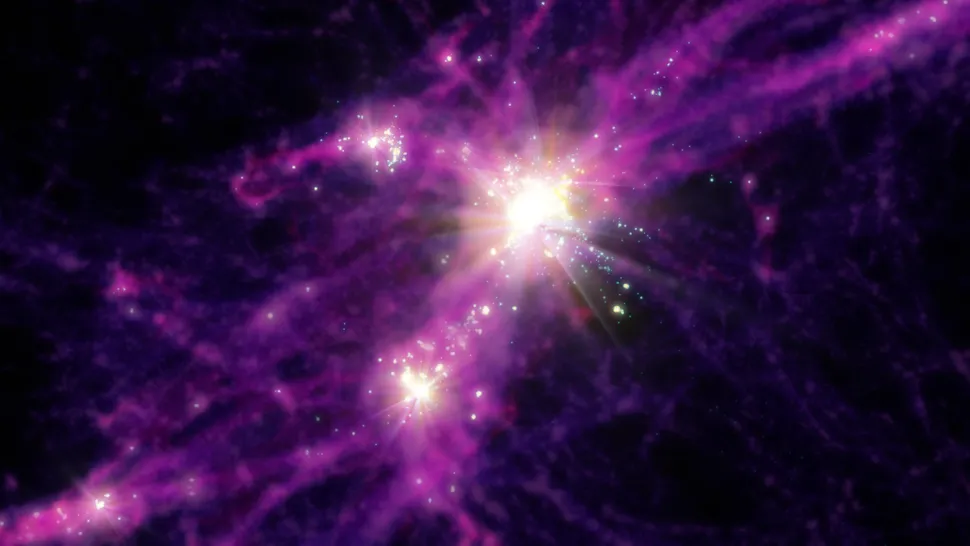James Webb showed that bright galaxies in the early universe were the result of intense star formation, not an error in the Standard Model of cosmology. Computer simulations confirmed that these galaxies became bright due to bursts of star formation.
Bright galaxies detected in the early universe by the James Webb Space Telescope (JWST) may be the result of massive bursts of star formation. This probably makes the galaxies brighter than expected for this period of their existence. This was the conclusion reached by researchers who created computer simulations of the birth of these galaxies and the beginning of star formation.
When JWST began observing in the summer of 2022, its observations of the Universe allowed it to quickly detect high-redshift galaxies. These are galaxies that appear to have existed in the universe before astronomers have ever seen them. In fact, galaxies seen when the universe was less than 400 million years old turned out to be brighter than the standard cosmology model predicted for that period. This has led to claims that the standard model explaining the “beginning” of small galaxies and their hierarchical growth through mergers is probably wrong.
“The discovery of these galaxies was a big surprise because they turned out to be much brighter than expected. Normally a galaxy is bright because it is large, but since these galaxies were formed early in the life of the universe, not enough time had passed since the Big Bang. Caltech, who together created a simulation of the formation of the first galaxies “How did these huge galaxies form so quickly?” said Claude-André Faucher-Gigur, a member of the team led by Guochao Sun from .
They found that the galaxies observed by JWST were not large but brighter than those observed during active star formation. The simulations allow modeling of the galaxies’ luminosities as well as their density distributions, which fully correspond to JWST observations.
Such bursts of activity are unusual. Astronomers sometimes see galactic mergers occurring in modern galaxies. This process can cause the gas to mix in such a way that gravity captures it, causing it to break up and collapse, forming many stars at once. In the early universe, when the environment was highly unstable, it was impossible for the first galaxies to gradually accumulate all the star-forming material.
We think the following process occurs: Groups of stars form, and after a few million years, these stars explode as supernovae. Gas is released [з галактики]and then retreats to form new stars, continuing the star formation cycle.
In the early universe, galaxies were much smaller than they are today, and they grew in part by the accumulation of intergalactic gas clouds, but also by merging with other galaxies. As we grew, gravity also increased. And so they reached a point where they could accumulate more material to form stars. This stabilized the rate of star formation, and today galaxies like the Milky Way form stars at a slower rate.













